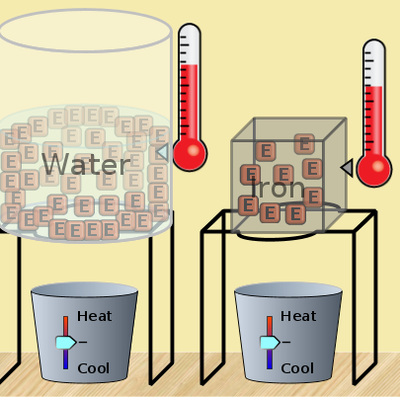Difference between revisions of "Introduction to Algebra"
| Line 29: | Line 29: | ||
=Additional Information= | =Additional Information= | ||
==Useful websites== | ==Useful websites== | ||
| + | http://www.math-drills.com/patterning.shtml <br> | ||
| + | http://www.commoncoresheets.com/Patterns.php<br> | ||
| + | http://www.math-aids.com/Algebra/Pre-Algebra/Expressions/Translate.html<br> | ||
| + | |||
==Reference Books== | ==Reference Books== | ||
NCERT Book referenced <br> | NCERT Book referenced <br> | ||
Revision as of 10:18, 11 May 2015
| Philosophy of Mathematics |
While creating a resource page, please click here for a resource creation checklist.
Concept Map
Error: Mind Map file Introduction_to_algebra.mm not found
Textbook
To add textbook links, please follow these instructions to: (Click to create the subpage)
Additional Information
Useful websites
http://www.math-drills.com/patterning.shtml
http://www.commoncoresheets.com/Patterns.php
http://www.math-aids.com/Algebra/Pre-Algebra/Expressions/Translate.html
Reference Books
NCERT Book referenced
http://ncert.nic.in/NCERTS/textbook/textbook.htm?femh1=11-14
Teaching Outlines
Concept - algebra lessons
Learning objectives
Generalization; and stating in algebraic terms
Algebraic variables can be “x” or “y” or “a” of “b”
Notes for teachers
Activity and lesson 1


The students must complete the table like the following:
No of squares| No of match sticks | Write match sticks (as a number expression) | Write algebraically (we completed this)
Lesson 2
Practice with generalization Commutative and distributive properties
(Part1 - Practice with generalization)
- Work with Ex 11.1. Different children can be given different problems. The important thing is they know variables can be in different letters.
- They should also know that different phenomena can be generalized. Mangoes, students, pencils.
- Ask children to talk about (I) did they add (ii) did they multiply?
- For example, when they made “Z” they added three match sticks. When they made 10 “Z” they added 3 +3+3+..... 10 times This is also multiplying by 10. And we simply wrote this as if “n” sticks are needed for a “Z”, then 10n sticks are needed for 10 “Z”. Multiplication is repeated addition.
- Work with the patterns and let children see generalization is not only addition but subtraction and multiplication.
- Check the following document for Shapes patterns students to understand patterns more.
(Part 2 - Commutative and distributive properties)
- Give students simple addition (with carry forward).
- In a group students add in different order and verify
- They should multiply in different order and verify
- Also do the distributive property like this
Go back to the number of squares and triangles and activities and introduce Expressions.
Give Ex-11.2 different problems as homework/ classwork practice problems.
Lesson 3
(this may take 2 periods)
- http://www.commoncoresheets.com/Math/Patterns%20and%20Function%20Machines/Identifying%20Pattern%20Attributes/English/1.pdf
- Numbers and generalizations – Use the spreadsheet to work with addition and subtraction and multiplication generalization
- Students must make word problems in groups to describe a given expression
- Students can work in groups for this number pyramid also - check file
- See page 232 of NCERT book used. That verbal/ mathematical expression important to build.
- Exercise 11.3 for all students (Do 11.3 with the spreadsheet – discuss some problems)
- In groups have children write out expressions for given situations in Page 234 of the book chapter.
- Exercise 11.4 based on student level
- Introduce equation (based on perimeter of an object) – Show Geogebra file
Lesson 4
Revisit forming an expression; take the same square example they did above. Extend by making it like this

See this link very useful - http://nrich.maths.org/8111
-How may different ways can you draw?
-How many down (vertical) lines and how many inverted C?
-How many along (horizontal lines) and and how any downs?
-How many squares and inverted C?
-How many match sticks?
- Exercise 11.4 based on student level
- Exercise 11.5 based on student level
Lesson 5
Expressions involving square
The objectives of this lesson is to show the difference between 5x2 and (5x)2
Use the attached Geogebra
file and use following questions.
What is the side of small square?
What is the side of large square? Explain in terms of small square
What is the area? Of small square? Of large square? Express in variables
(x)² and (factor*x)². How is this different from factor*x²
For the (5x)2 you should keep drawing squares using polygon tool.
Use the following second NCERT textbook
http://ncert.nic.in/NCERTS/textbook/textbook.htm?gemh1=12-15
Exercise 12.1
Activity No #
- Estimated Time
- Materials/ Resources needed
- Prerequisites/Instructions, if any
- Multimedia resources
- Website interactives/ links/ Geogebra Applets
- Process (How to do the activity)
- Developmental Questions (What discussion questions)
- Evaluation (Questions for assessment of the child)
- Question Corner
Activity No #
- Estimated Time
- Materials/ Resources needed
- Prerequisites/Instructions, if any
- Multimedia resources
- Website interactives/ links/ Geogebra Applets
- Process (How to do the activity)
- Developmental Questions (What discussion questions)
- Evaluation (Questions for assessment of the child)
- Question Corner
Concept #
Learning objectives
Notes for teachers
These are short notes that the teacher wants to share about the concept, any locally relevant information, specific instructions on what kind of methodology used and common misconceptions/mistakes.
Activity No #
- Estimated Time
- Materials/ Resources needed
- Prerequisites/Instructions, if any
- Multimedia resources
- Website interactives/ links/ Geogebra Applets
- Process (How to do the activity)
- Developmental Questions (What discussion questions)
- Evaluation (Questions for assessment of the child)
- Question Corner
Activity No #
- Estimated Time
- Materials/ Resources needed
- Prerequisites/Instructions, if any
- Multimedia resources
- Website interactives/ links/ Geogebra Applets
- Process (How to do the activity)
- Developmental Questions (What discussion questions)
- Evaluation (Questions for assessment of the child)
- Question Corner
Hints for difficult problems
Project Ideas
Math Fun
Usage
Create a new page and type {{subst:Math-Content}} to use this template